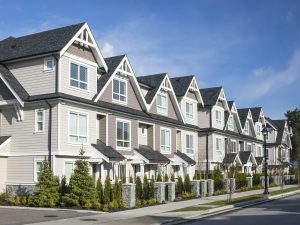
Workmanship, Quality Control & Water…
Probably because I have inspected thousands of condo buildings and their units for construction defects and other issues, I am often asked by both prospective condo buyers and property managers to name the most common problems found in new condo developments. Interesting enough, new condo buildings have more hidden problems than older facilities whose defects have manifested themselves over time. Therefore, my first response to a buyer is to hire a professional building inspector before purchase. To a board or property manager, I recommend engaging an engineer to conduct a transition study prior to facility acceptance.
When & Why
A building inspection is like an auditor looking over the books. If no early problems are discovered, the process goes more smoothly. When issues appear early, though, it is a strong indication that a more in-depth investigation is needed. Another maxim: problems are rarely found in the materials and equipment; rather, defects are primarily due to workmanship quality control and water in all its forms.
- Grading/Drainage
New grading is prone to experience settlement. This often manifests itself in sunken storm drain grates; uneven paved surfaces; cracked sidewalks; driveway surface depressions allowing ponded water; drip-edge ground sloping toward the foundations; etc. Sometimes these problems can only be observed during rain events, but they can also be indirectly discovered from visible soil erosion and dried water strains. - Building Envelope
The building envelope includes exterior siding materials, doors, windows, and roof surface. As mentioned earlier, water or air infiltration problems are not due to defects in materials but rather improper flashing, poor use of fasteners, and not following manufacturer’s installation recommendations. A review of the manufacturer’s specifications can be the most productive inspection technique. - Foundation Cracks
Most foundations use concrete, and concrete shrinks as it cures. Steel or fiber reinforcement is used to control and minimize cracking during the curing process. For this reason, most cracks in concrete are not a sign of structural problems or foundation settlement. Most building engineers can quickly determine the significance of observed cracking. Often water infiltration through the cracks is a greater issue. - Wood Flooring
Floorboards separating or buckling is a commonly reported problem in newly installed solid wood floors. Assuming the floor has not experienced a recent flooding event, movement of solid wood floors is often due to the installer not allowing the floor to acclimate to the interior’s humidity level. Floor wood typically has a moisture content of 6 to 8% moisture content in New England homes. If the floor material is not stored for a few days in the home’s environment prior to being installed, floor movement can result. - Plumbing
Always turn on the faucets and look under the sink. It’ surprising how many water leaks can be found with just this simple exercise. One of the most common problems discovered is the improper reversal of the hot- and cold-water piping. - Ventilation Ducts
Ductwork is not always sealed during construction, resulting in dust and debris from operations settling in the ducts. Ducts full of dust and debris should be cleaned by a professional. - Paint
Though full paint coverage may be called for in the specifications, sometimes tightened schedules and poor supervision allow areas such as basement area, closet ceilings, and other less visible spaces to be overlooked. Paint surfaces should always be inspected with a strong light applied at an angle. Painting irregularities, called “holidays,” can often only be seen using this method. - HVAC Systems
Modern systems require final reviews to determine if they are operating within their design parameters. This may include a review of the balancing report, use of anemometers to measure air flow, and temperature readings at floor and wall registers. Room temperature controls can be adversely affected when placed where direct sunlight can reach them. - Unauthorized Substitutions
A review of the project specifications can reveal inferior material or equipment has been substituted. This is typically done to save the developer money. Whether the substitution is equal or better than first specified is often a subjective matter, but still should be judged to be acceptable by the intended user. - Incomplete work
This issue can take on many forms, but the most important is life safety issues. This includes adequate fire sprinklers, fire-stopping seals around pipes and conduit, and code required fire separation. Fire alarms and CO2 detectors should be tested.
